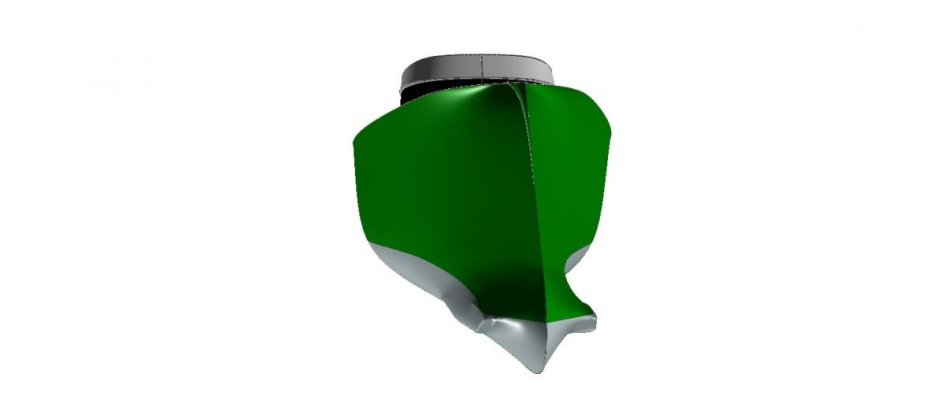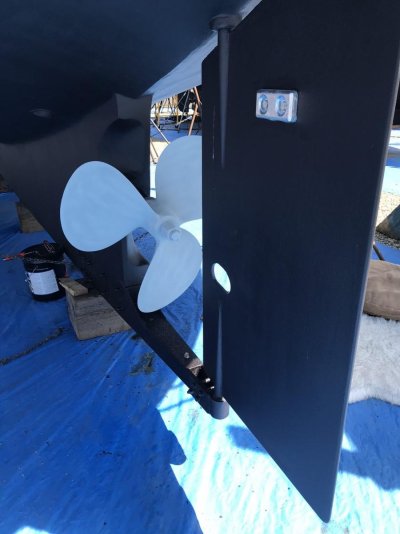mvweebles
Guru
- Joined
- Mar 21, 2019
- Messages
- 7,246
- Location
- United States
- Vessel Name
- Weebles
- Vessel Make
- 1970 Willard 36 Trawler
Usually leave either Newport or chessie and next stop is BVI or Antigua. Go south of Bermuda but don’t stop there. Straight shot is so much quicker. Don’t need to fight trades or follow the gentleman’s way. Usually takes 8-12 days. Don’t like the leewards as much as the windwards. Like Bequia a lot.
I’ve never cruised the Bahamas. Have 6’6” empty. Been there by boat twice. A delivery from southwest harbor Maine to man of war cay. That was on a Morris done as a straight shot. And once on a sistership to chicken harbor from USVIs.
So the way to go is
Active fins over fish
Hydraulics over electric (thrusters, fins, AP etc.)
A 30 year old N46,47, 50 is okay if kept up.
?opinions about metal? Most high lat sail is Al. Steel Puffins and Waterlines are well thought of. Also looking at some Steve Seaton.
My experience in the Caribbean/Atlantic stops at Florida, and even then it's not much - just dropping boats and flying home so I don't know the wx patterns. But looking at the charts, first thing that comes to mind is head south to 50-100 nms off Cape Hatteras (Gulf Stream would be something that needs to be figured out). Would add about 300 nms to the trip to BVI but would give options, and you wouldn't show up in BVI needing 800 gals @ Shylock prices.
As far as stabilization, I just replaced mine with new Wesmars. Having push-button control is nice, but if you're really planning on 1500-nm jaunts from Newport to BVI, I'd go with paravanes because they are simpler and more reliable, plus give flopper stopper stability at anchor. Downside is they are manual set/retrieve, though there are normally winches with knee-activated switches to keep your hands free. But you can't run inlets with them out so the tradeoff is convenience (hydraulic) vs simplicity/reliability (fish). But if you're looking at older boats, the decision will already be made for you as it will be equipped already. Not unusual to find a Nordhavn with both Paravanes and Naiads (ABT).
Yes on hydraulics. In my opinion, ABT is the best in the business for this sized thruster and paravane setup.
As far as N46 vs N47 vs N50, I have delivered a handful of both the N46 and N47 from Dana Point to PNW, albeit almost 20-years ago. I have not delivered an N50, but have delivered several N57's, her bigger sister. Not many N50s were made compared to the N46/N47 so options are limited. They are reportedly a relatively fast boat.
In my opinion, the flybridge on the N46/N47 (if equipped) alters the handling considerably. With the flybridge, these boats must be run with stabilizers in all but calm conditions. Best I can tell, few N46's had flybridges, most N47s do, so again, options may be limited. Flybridge sure would be nice in Bahamas.
The N46 is legendary as it absolutely changed long distance powerboating. But she's a relatively small boat for her LOA. Engine room is a bit cramped and the fuel tanks were positioned quite a ways aft so she squats a bit when fully loaded (them moved the fuel tanks late in the production run).
I believe it was with the N50 that PAE introduced their "Maintenance Strakes" which are hull-bump-outs either side of the engine to provide near-standing headroom. At the time, PAE said they actually improved efficiency which is hogwash, but the benefit in the ER is clear and compelling even if there is a fractional efficiency loss. The N47 has a decent engine room and lazarette with plenty of room for equipment. She also benefits from the many, many advances PAE made as a result of their around-the-world run with the N40 around 2000. On the downside, I find the boat a bit slow and the windage means shes even slower in weather. What's slow? 175-180 nm days (in all fairness, N46 is about the same). I would expect the N50 to do a consistent 200 nm day, or at least close.
All good boats. Personally, only because I have such respect for the N57, I'd probably hold-out for an N50 even though I haven't spent any time on one. But, as I insinuated at the outset of this now-long post, I wouldn't do the direct run to BVI - I would minimize risk and only add 1-1/2 days to the 9-day trip by following the coast with a bail-out plan if wx looks lousy. I don't mind a bit of bad weather - have powered through a bunch. But I once spent 5 of 7 days beating my way up the Atlantic/Gulf from Panama to Florida in 25-30 kt winds and short 8-footers and it sucked. A day or so is fine if it gets you to the other side of something, but for vacation time, not my cup of tea. But to each their own.
Hope this helps. Best of luck with your decisions. Given I'm behind a keyboard, nice to live vicariously - thanks Dr H
Peter






